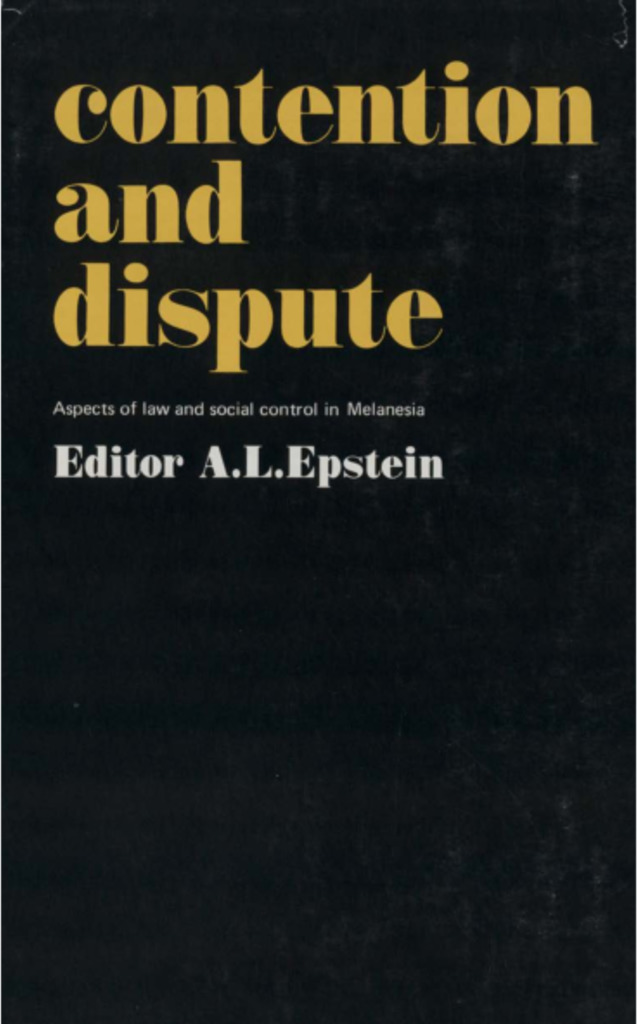Authors & editors
ANU Press has collaborated with a diverse range of authors and editors across a wide variety of academic disciplines. Browse the ANU Press collection by author or editor.

The Indianized states of Southeast Asia »
Publication date: 1975
In his editor{u2019}s note, Walter Vella states that this classic text "has been universally acclaimed and - the surest proof of its impact - heavily relied on by all later scholars. ... [It] remains the basic text for those who seek to understand Southeast Asia - not only its ancient past, but also its immediate present - for the Southeast Asia of today cannot be understood without a knowledge of the traditional values and institutions, which remain vital, and which present leaders seem increasingly to esteem as a guide to the future." Recognized as the unchallenged dean of Southeast Asian classical scholarship, George Coed{u00E8}s wrote for both specialists and the general public. From a lifetime of study of Chinese, Arabian, and European chronicles, and from deciphering ancient annals and inscriptions, Coed{u00E8}s has traced the story of India{u2019}s expansion that is woven into the culture of Southeast Asia. It was Coed{u00E8}s who revealed the existence and importance of the ancient state of Srivijaya in southern Sumatra, and insight into classical Khmer civilization rests upon his epigraphic research in Cambodia. In this volume are the synthesized results of these and other studies, culminating sixty years of research.

The eukaryote chromosome: papers presented at a conference held under the auspices of the U.S./Australia Science agreement »
Publication date: 1975
Papers presented at a conference held under the auspices of the U.S./Australia Science Agreement

Moscow trefoil: and other versions of poems from the Russian of Anna Akhmatova and Osip Mandelstam »
Publication date: 1975
Published Press Archives http://press.anu.edu.au/node/2743 1885_115144.jpg ANU Press Moscow trefoil: and other versions of poems from the Russian of Anna Akhmatova and Osip Mandelstam Monday, 18 August, 1975 Not available Archive Scholarly Information Services

The Strategic nuclear balance: an Australian perspective: papers from a conference held by the Strategic and Defence Studies Centre, Research School of Pacific Studies, the Australian National University, Canberra, 1974 »
Publication date: 1975
Published Press Archives http://press.anu.edu.au/node/3185 1885_114889.jpg ANU Press The Strategic nuclear balance: an Australian perspective: papers from a conference held by the Strategic and Defence Studies Centre, Research School of Pacific Studies, the Australian National University, Canberra,

A history of contract at common law »
Publication date: 1975
Published Press Archives http://press.anu.edu.au/node/3181 1885_114798.jpg ANU Press A history of contract at common law Monday, 18 August, 1975 Not available Archive Scholarly Information Services Stoljar, S. J

Look forward, not back: aborigines in metropolitan Brisbane, 1965-1966 »
Publication date: 1975
Aborigines who come to Brisbane from settlements and small country towns face all the problems of rapid urbanisation - housing, employment, education, morale. They have had some previous experience of white Australian society, but little of the social institutions that white Australians take for granted. In Brisbane, these social institutions and their agencies are available, yet Aborigines do not take advantage of them, partly because of their past lack of experience and partly because they do not always see such institutions as compatible with their life styles. The authors of this book believe that Aborigines can and will determine their own futures. They argue that white Australia must encourage the Aborigines to use existing social institutions and, if these are unsuitable, create new ones that will help Aboriginal Australians to a satisfying life. In redressing thus the neglect and indifference of the past, Australia might approach a multi-racial society rich in diversity.

Greeks in Australia »
Publication date: 1975
The second largest migrant group in Australia is made up of some 300,000 people who regard themselves as Greek. Not all were born in Greece - some come from ancient Greek communities in Russia, Africa and the Middle East, some were born in Australia. What they have in common is their feeling of Greekness, their loyalty to their origins, their deep concern with family ties and values. They resist marriage with non-Greeks, adhere to the Greek Orthodox religion and stubbornly preserve the Greek language and culture. This book provides an introduction to the nature and purpose of Greek societies and organisations, and explains how Greeks relate to other Greeks in Australia and to Australian people and institutions. In identifying areas where Greeks have succeeded or failed in Australia, it also shows where Australia has succeeded and failed in its dealings with them and with other migrant groups.

Ancient Tahitian society »
Publication date: 1975
Published Press Archives http://press.anu.edu.au/node/3289 1885_114907.jpg ANU Press Ancient Tahitian society Monday, 18 August, 1975 Not available Archive Scholarly Information Services Oliver, Douglas L

Bloody Buna: the campaign that halted the Japanese invasion of Australia, maps drawn by A.S. Hardyman »
Publication date: 1975
In 1942 the Australian 16th and 25th AIF Brigades, supported by militiamen of the 3rd Battalion, forced the Japanese back over the KokodaTrail and into a narrow strip in the Buna-Gona-Sanananda area along the northern New Guinea coast. It was decided the Australians would clear the Gona-Sanananda area; the Americans would attack Buna. The inexperienced 32nd U.S. Infantry Division gathered south of Buna, and on 19 November 1942 the confident main American assault began. The veteran Japanese jungle fighters, recently reinforced, were ready. They had constructed an elaborate defensive system of dirtcovered coconut-log bunkers; swamps; flooded rivers, rain, mud and the kunai hampered the Americans; thickly-foliaged trees made air strikes nearly impossible, and faulty intelligence reports gave a totally inaccurate assessment of the Japanese strength. By December the attack on Buna had halted. Poorly trained and equipped, discipline gone, hungry, dirty and ill, the Americans were reluctant to move. Lieutenant-General Eichelberger, sent in by the impatient Supreme Commander, General MacArthur, ordered a major reorganisation, and new attacks were mounted. But the bloody Buna battle again ground to a stalemate. Australia's 18th Brigade and other troops, equipped with long overdue tanks and artillery, joined in whilst other Australian forces pressed on with their task at Gona-Sanananda. The Japanese fought with fanatical resolve but the weight of the Australian-American attacks finally told, and on 2 January 1943 the Americans took Buna government station to end one of the most desperate campaigns of the entire Pacific war. In Bloody Buna senior U.S. Army historian Lida Mayo describes the affair in authentic and gripping detail. Her narrative is sharpened with interviews and private accounts, and she leaves no doubts about the crushing mental pressures, physical ordeals, brutalities, and macabre horrors of the struggle. Nor does she fail to analyse the problems created by the remoteness of higher command from the scene of action.

The classification of Australian local authorities »
Publication date: 1975
Published Press Archives http://press.anu.edu.au/node/2939 1885_114792.jpg ANU Press The classification of Australian local authorities Monday, 18 August, 1975 Not available Archive Scholarly Information Services Harris, C. P.

Building a terrace »
Publication date: 1975
Published Press Archives http://press.anu.edu.au/node/3469 1885_114713.jpg ANU Press Building a terrace Monday, 18 August, 1975 Not available Archive Scholarly Information Services Brissenden, R. F

Constitutional responsibility for education in Australia »
Publication date: 1975
The Australian Constitution makes no reference to education as one of the responsibilities transferred by the states to the central government. Yet the Australian Government is very much involved, both in financing education in the states and also in its future development. Is the Australian Government usurping states{u2019} rights? This book examines the development of central government involvement in education, and its justification, in particular the {u2018}benefits to students{u2019} clause in the 1946 social services amendment to the Constitution. Leading court cases concerning these powers, decided in the High Court of Australia, suggest that the central government does have authority for its actions. Clearly, the book is of fundamental importance for educationists, states-righters, and lawyers, amongst others, and its implications are far reaching.

Contention and dispute: aspects of law and social control in Melanesia »
Publication date: 1974
Law pervades the social, political, and economic aspects of the lives of all people in all communities. In Papua New Guinea, as in many emerging nations, however, law is not always the panoplied abstraction of western nations; rather, it is the customary law, in which discussions and arguments about disputes within the groups are carried on until consensus is reached. Contention and Dispute presents several case histories from different parts of Papua New Guinea showing what people argue about and how they settle their differences. Each is analysed in terms of its context of place, social conditions, disputants, and personalities. Each exemplifies customary law in action, in native courts that are often vigorous, downright, earthy - and devious. Each is a community affair, utterly remote from the formality of western courts, and is at once a means of restoring the status quo and a platform for personal and political ambitions. A fundamental problem for Papua New Guinea today is to lay the foundations for a nationally acceptable system that will combine the legal needs, in national and international terms, with a customary law that is different from but not inferior to introduced law. This book provides an essential background for the solution.

Problem of choice: land in Papua New Guinea's future »
Publication date: 1974
For the peoples of Papua New Guinea land is overwhelmingly important, not only as the sole means of life but also for what it means in their culture. It is inalienable; it came to them from all their forebears, and it will belong to all their descendants. Its emotional and spiritual significance evokes from them a religio-mystical response completely alien to the Western attitude that land is just another commodity. Yet, for a developing nation, land is also a commodity - to be bought and sold for large-scale agriculture, to be mined, to be used for commerce and agriculture, schools and cities. Thus there is an inherent conflict between traditional and potential uses reflecting a profound conflict of values and attitudes. As Papua New Guinea approaches independence, no problem is of greater importance than the role of land, for no other issue is potentially so violently divisive. Is it to be a national estate? Is it to be owned and used individually, co-operatively, corporately? What will be the impact on the whole social fabric of the country and the lives of its people? In essays expressing every shade of opinion from expatriate detachment or involved commitment and conviction to indigenous bewilderment, rage, frustration, or sense of betrayal, the authors in this book examine some aspects of these extremely complex problems. For the future unity and security of the country the answer is crucial. It is one that the Papua New Guineans alone must make. But there is no easy answer, no simple solution, to their Problem of Choice.

A show of justice: racial 'amalgamation' in nineteenth century New Zealand »
Publication date: 1974
A Show of Justice looks at New Zealand in the nineteenth century when British officials and humanitarians attempted through assimilation to save the Maori from destruction by the tide of European settlement. This policy, and the special administrative and judicial machinery set up to implement it, helped avert the situations in which the American Indians and Australian Aborigines find themselves. Nevertheless, it led to the subjugation of the Maori under {u2018}a show of justice'. Using the records of the old Native Department, Dr Ward probes the attitudes of Maori and settlers towards each other. He shows how, in practice, the settlers both refused to recognise Maori political and judicial institutions and, lest it enabled them to keep their lands closed to settlement, denied them a genuine share in the new state. He reveals, too, how under settler pressure the special machinery set up to involve the Maori was hastily abolished, a step which has since contributed to keeping the two races apart. Maori are now demanding honest answers to many unanswered questions. In this book they, and all concerned with the problems of race relations, will find a basis for some of the answers. And at a time when nations are being made acutely aware of the aspirations of their minority races, national leaders would benefit from a long hard look at New Zealand's experience.

Words and their meanings »
Publication date: 1974
Published Press Archives http://press.anu.edu.au/node/3343 1885_114904.jpg ANU Press Words and their meanings Sunday, 18 August, 1974 Not available Archive Scholarly Information Services Ullmann, Stephen

Church and state in Tonga: the Wesleyan Methodist missionaries and political development, 1822-1875 »
Publication date: 1974
Published Press Archives http://press.anu.edu.au/node/3119 1885_114697.jpg ANU Press Church and state in Tonga: the Wesleyan Methodist missionaries and political development, 1822-1875 Sunday, 18 August, 1974 Not available Archive Scholarly Information Services L??t??kefu, Sione

'Not a white woman safe': sexual anxiety and politics in Port Moresby, 1920-1934 »
Publication date: 1974
Sexual anxiety, bordering on panic, in the Australian colonial town of Port Moresby - 'Port' - during the 1920s is the theme of this book. Port Moresby was more white, more Protestant, more homogeneous than comparable towns like Darwin or Rabaul. Its Papuan inhabitants were considered low on the ladder of civilisation and were despised for trying to climb up it. At the same time they were feared. Liaison with a black, demeaning to a white man, was regarded as defilement to a white woman, and the Papuans were believed to be primitives, unable to control their sexual appetites. Panic and political passion forced Administrator Hubert Murray, whose native policy was criticised as {u2018}lenient{u2019}, to introduce the savagely discriminatory White Women's Protection Ordinance. It stated that anyone who raped or attempted to rape a white woman or girl would be hanged. Mrs Inglis tells the stories of two Papuans convicted under the Ordinance and shows how guilt over the conduct of the trials and over the public hanging of one of the m en clouded the judgment of the white residents so that they became incapable of telling the truth about the incidents, then or later. She questions their belief, ironically shared by Papuans, that white women, sometimes unwittingly, provoked the attacks by immodest behaviour and demonstrates that the Ordinance was the logical outcome of hurt male prestige, authority, and racial pride. The Ordinance was revoked in 1958.

The broken years: Australian soldiers in the Great War »
Publication date: 1974
Before the First World War most Australians shared the emotions and traditions of the British Empire. Proud of their British heritage, anxious to raise the Imperial status of Australia, they were eager to fight and, if need be, to die in defence of their race and country. But the horror and tragedy of the conflict brought fundamental changes in outlook. Many of the pre-war enthusiasms persisted, but the days of unquestioning allegiance to Empire were beginning to come to an end, to be replaced by the bittersweet tradition of Anzac. Dr Gammage shows how and why these changes took place. Using the diaries and letters of one thousand front-line soldiers of the First Australian Imperial Force, most of them now part of a unique collection housed in the Australian War Memorial in Canberra, he reconstructs the motives and expectations with which these men volunteered and the experiences they encountered. He highlights and examines the new attitudes to war and to the homeland that developed and foreshadows the important effects in Australia of the changed outlook brought home by the survivors. Those who have returned from war will recognise immediately the raw realities faced by the 'diggers', the growing disillusionment, and the hopes for the future. Those with fathers, husbands, or brothers who served, and all those concerned with what happens to men at war, cannot fail to be moved by the simple dignity of the men{u2019}s accounts, or by the understated courage with which they wrote to their families of the miseries they endured. This book, written with sensitivity and scholarly care, must be read if we are to understand war and its impact on the ethos of a nation.

Irian Jaya: the transformation of a Melanesian economy »
Publication date: 1974
In 1963 Indonesia took over the former Dutch colony of West New Guinea. In the decade since, this large resource-rich Melanesian area, now Irian Jaya, has undergone rapid change to become an integrated province of the comparatively resource-poor Republic of Indonesia. Under the culturally alien Dutch administration change was slow and felt predominantly in the towns. Under the equally alien Indonesian administration the pace of change has accelerated and the effects have been more dramatic, even traumatic. Irian Jaya towns have now been substantially integrated into the Indonesian system - development programs have had marked effects on education, money, labour and commodity markets, transport and communications, and the utilisation of forest, mineral and fish resources. These effects have not always benefited the Irianese people and the gap between the modern economy and the villages still pursuing a Melanesian way of life is increasing. The Irian Jaya experience, traced in this book, is of great importance to those concerned with the future of Papua New Guinea, of the Melanesian economies to its east, and of the Southeast Asian economies to its west. Little use has so far been made of this rich source of comparative data and the authors have here, for the first time, assembled in a concise and interesting form Irian Jaya{u2019}s responses to its experience.

The Taching oilfield: a Maoist model for economic development »
Publication date: 1974
The Taching oilfield, discovered in the late 1950s, has become China's main producer of crude oil and a national model for all industry. This paper relates the history of this remarkable complex and its development from its discovery, through the disruptions of the Cultural Revolution up to the leading position it holds today. Mrs Chan analyses Taching's pattern of development and discusses its successes and failures. She extends her discussion to embrace Mao Tse-tung's aims in economic development and also draws some conclusions about the feasibility of Maoist economic development for China. Because of the close interrelationship between social, political and economic development that exists there this paper will be of interest to all observers of China, particularly those concerned with its economic development.

Aboriginal tribes of Australia: their terrain, environmental controls, distribution, limits, and proper names »
Publication date: 1974
Published Press Archives http://press.anu.edu.au/node/3203 1885_114913.jpg ANU Press Aboriginal tribes of Australia: their terrain, environmental controls, distribution, limits, and proper names Sunday, 18 August, 1974 Not available Archive Scholarly Information Services Tindale, Norman B.

Aborigines in the Northern Territory cattle industry »
Publication date: 1974
Perhaps nowhere in Australia have working and living conditions for Aborigines been so bad as on Northern Territory cattle stations. Though the Aborigines{u2019} skill in handling cattle is acknowledged by their white employers, rarely have they gained recognition in any material way. None were paid full wages, many were fortunate if they received any cash wages at all, almost all lived in appalling conditions, and many were subjected to physical violence. These facts emerge clearly from Dr Stevens{u2019}s thorough research into the conditions obtaining on Territory pastoral properties in the 1960s. During surveys in 1965 followed up in 1967, Dr Stevens questioned employers and both black and white workers in the industry, eliciting some revealing replies. It was apparent that the Aboriginal workers were fully aware of their degraded position and the way in which they were exploited. Where possible Dr Stevens visited the Aboriginal station {u2018}camps{u2019}, though he met with opposition from some station owners, reluctant to allow him free access. In almost all of them the living conditions were primitive, the best of accommodation being little more than a corrugated iron hut. Few camps had running water or cooking facilities. In the growing awareness of the Aborigines{u2019} plight in Australia, this book is an important testimony of the conditions in which many lived and worked, conditions that must no longer be allowed to exist.

The Marquesan journal of Edward Robarts, 1797-1824 »
Publication date: 1974
Edward Robarts was among other things whaler, beachcomber, Tahitian rum producer, Tuamotuan pearler, butler in Penang, gardener and policeman in Calcutta. He deserted his ship in 1798 in the Marquesas, and lived there as a native, where he was adopted by the chiefly families, married a chief's daughter, and fought in battle as a Marquesan warrior. He spent longer in the islands than did most eighteenth century beachcombers, and got to know more about Polynesian society than did most other early observers. After leaving the Marquesas Robarts was employed in Penang as butler to a relative of the Raffles family. Raffles introduced him to Dr Leyden, under whose patronage he wrote this Journal. Now published for the first time, it is as Robarts wrote it, although Professor Dening has made some minor concessions to readability, as well as providing the invaluable introduction and annotations. Robarts's account of his Marquesan life is the single richest source of material yet published on this least known and unders tood of all Polynesian people. The scholar will find that Robarts{u2019}s ethnography modifies some later preconceptions about the Marquesas, and throws new light on the processes of cultural change in the Pacific. For the general reader the book is an enthralling autobiography of a common man who led a most uncommon life.

British immigrants and Australia: a psycho-social inquiry »
Publication date: 1974
Since World War II many thousands of Britons have emigrated to Australia, most of them to settle permanently but some to return home or move on elsewhere. Why they decided to emigrate and what changes in beliefs, attitudes and behaviour occurred after their arrival in Australia are the subject of this book. Basing his work largely on an extensive survey among assisted passage British migrants before they left Britain and after intervals of two and seven years in Australia, Dr Richardson examines the various stages through which immigrants pass in the process of settling down in their new country and he discusses the intriguing questions of why some British immigrants change to the point where they consider themselves more Australian than British while others remain inalienably British. This is an important work for theorists of immigrant behaviour - drawing as it does on the findings of other researchers in the field - and for administrators responsible for the welfare of British immigrants in Australia. The immigrants themselves will find it helpful to discover that they are not alone in their problems and perplexities.



